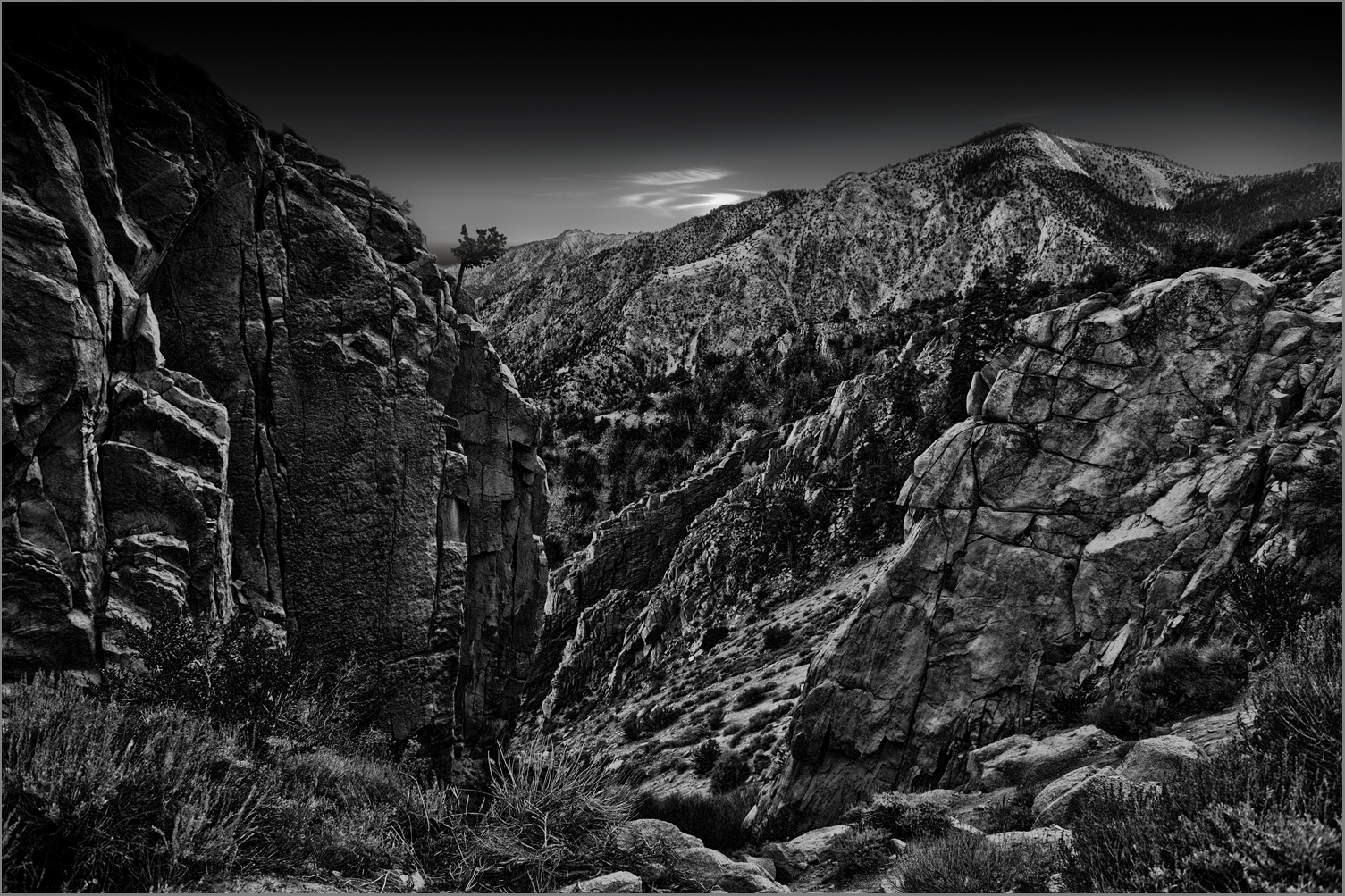GET-YUR-MOTOR-RUNNIN' ROAD TRIP
(Astoria - Santa Fe - Death Valley - Astoria)
Lone Pine, CA
November 16, 2013 (Day 33 of 44)
Miles Today: 53 / Trip Miles: 3,819
Photos:
Click on photo for a larger image.
All photos © 2014 Leon Jackson. All Rights Reserved.
Film History Museum:
The Lone Pine Film History Museum has a good collection of authentic movie costumes, movie cars, props, posters, and other memorabilia. The collection tells the story of filming in the Lone Pine area from the early days of silent films to modern films such as Django Unchained. Most of the collection deals with westerns. My favorite exhibit was the getaway car, a 1938 Plymouth coupe, driven in High Sierra by Humphrey Bogart. Whitney Portal Road was used in this 1941 film that culminated with a shoot-out between Bogart's character and the police, at the foot of Mount Whitney. [Rating = B]
Horseshoe Meadows Road:
This 25-mile, one-way drive from Lone Pine climbs over 6,000 feet into the Sierras. Lone Pine in the Owens Valley sits at an elevation of 3,700 feet; the elevation of Horseshoe Meadows is 9,960 feet. The first section of the road travels through the Alabama Hills. Then, a long straight-away is followed by high-speed turns and then switch-backs. The road travels through the Inyo National Forest, is paved the entire length and has few guard rails and lots of sheer drops. Horseshoe Meadows Road is like a Pike's Peak Hill-climb, but on pavement. The road was constructed for a proposed Disney Enterprises ski area. When the Wilderness Act came into existence, the ski area concept was abandoned in 1977. In 1975 Disney suspended planning of another Sierra ski area (Mineral King). I guess Mickey Mouse is not a big wilderness fan. Views to the east of the Inyo Mountains were terrific. On a clear day, the Panamint and Death Valley ranges are visible, but not today. The road ends at a campground and trailheads. [Scenic Rating = B]
Wilderness Act of 1964:
The Wilderness Act of 1964 was the result of a long effort to protect federal wilderness, and to create a formal mechanism for designating wilderness. The Act created the legal definition of wilderness in the United States, and protected 9.1 million acres of federal land. It was signed into law by President Lyndon B. Johnson in September 1964 after over sixty drafts and eight years of work. The Wilderness Act is well known for its succinct and poetic definition of wilderness: “A wilderness, in contrast with those areas where man and his own works dominate the landscape, is hereby recognized as an area where the earth and its community of life are untrammeled by man, where man himself is a visitor who does not remain.”
Shadows - 200 Inch Inseam
Horseshoe Meadows Road in the eastern Sierra Nevada mountains near Lone Pine, CA. Inyo Mountains and Owens Valley in far background.
[flickr]
[flickr]
Rock was blasted to create Horseshoe Meadows Road—a road to nowhere. Disney built this 25-mile road in anticipation of a proposed ski area that didn't work out. When the Wilderness Act came into existence in 1964, the ski area concept was abandoned.
[flickr]
[flickr]
Sierra Ravine
Early twilight in Sierra Nevada mountains—viewed from Horseshoe Meadows Road.
[flickr]
Things to do next time in the Lone Pine area:
- Dolomite Loop off of CA-136 (gravel road).
- Cerro Gordo mine & ghost town, north of CA-136. Cerro Gordo is on private land, however the waiter at lunch said the owners "welcome" visitors and the road is rough gravel but travel-able by car.
- Spend more time hiking in Alabama Hills. Definitely check-out Mobius Arch—an arch that frames Mt. Whitney. Follow the self-guided tour map of film shooting location in the Alabama Hills.
Today's Drive to Horseshoe Meadows:
Scenic Rating: B
Driving Fun/Road Rating: A
Tomorrow:
Heading north through the Owens Valley to Bishop, CA.




1 comment:
Cool photo with your shadow.
Post a Comment